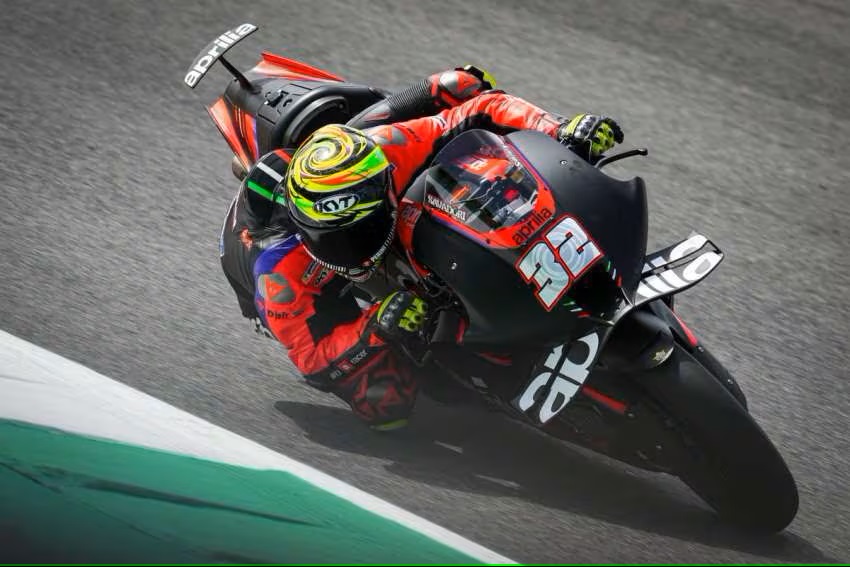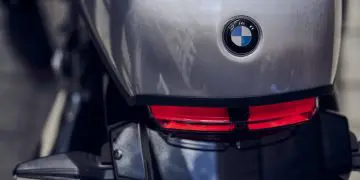The Aprilia MotoGP RS-GP bike was the first to hit the track with a rear wing similar to those seen on racing cars in 2022, and judging by the 2024 prototypes presented at the end-of-season test in Valencia, we will see the same on practically all rival bikes next year. Just as front wings quickly became an essential feature on sport bikes when they first appeared in MotoGP, it is likely that rear spoilers will eventually be introduced on production models in the future.
Aprilia has filed a patent application describing the design and purpose of the rear of their racing bike, but also clearly indicating that the same idea can be applied on the road, stating that the idea “is related to ‘road’ bikes,” before explaining that the practical benefits actually apply to racing. The patent features the same combination of rear wing and spoiler that was first seen in 2022, and although it has only now been published, the document was filed with patent authorities around the same time.

Ideas exclusively intended for competition are rarely subject to patents. Partly because this means illustrating exactly how the ideas work and explaining their benefits – which is not ideal in a highly competitive environment. After all, there is no guarantee that the patent will be accepted, so submitting an application may simply reveal your secrets. Even if a patent is accepted, it would be seen as unsportsmanlike to try to use patent law to prevent rivals from using the same idea in competition, and the proliferation of rear spoilers that appear on rival bikes reveals that Aprilia is not trying to do any of that. With this in mind, logically, Aprilia’s patent application is intended to protect its idea in case the company decides to implement the same idea in a production model.
While rear spoilers will never be a game-changer for production bikes (even in MotoGP their benefits are still superficial, so rear wings are often added or removed depending on specific circuits).
What Aprilia’s patent does is provide a clear explanation of what exactly the rear wing arrangement achieves. Aprilia’s system is a bit more complex than a simple wing, combining a pair of winglets on the sides of the rear of the bike with a spoiler mounted on top. Although the result closely resembles the rear wings used in racing cars to help with stability in corners at incredible speeds. The downforce generated helps keep the rear wheel on the ground, particularly during hard braking at the end of a straight, when the rider leans into corners, when the rear wheel would normally be unloaded or nearly unloaded.

The document states: “…the spoiler allows to create an aerodynamic force on the rear wheel. This force is effective especially during emergency braking, that is, sudden braking, and is meant to reduce the bounce of the rear wheel, improving the grip of the motorcycle and thus facilitating entry into the curve. In addition, the greater load created at the rear end of the motorcycle is useful on straight sections with undulations, such as a descent, where the motorcycle reaches a speed of about 350 km/h and would tend to lose grip.”
Although Aprilia is not currently competing in WSBK – its 1099cc V-4 engine is too large for current regulations and the brand has not followed Ducati’s example in creating a special 999cc homologation version to stay below the 1000cc limit – it is clear that a patented rear wing design, used on a production motorcycle, can provide an advantage against competing manufacturers. Honda’s 2024 updates for the CBR1000RR-R SP, for example, include changes to the winglets that can only be truly beneficial at the highest level in racing. Aprilia’s patent application covers itself in case it wants to put the aerodynamic thinking into production, and follows a 2022 patent that described other aerodynamic methods of the RS-GP.
Source: https://www.cycleworld.com








